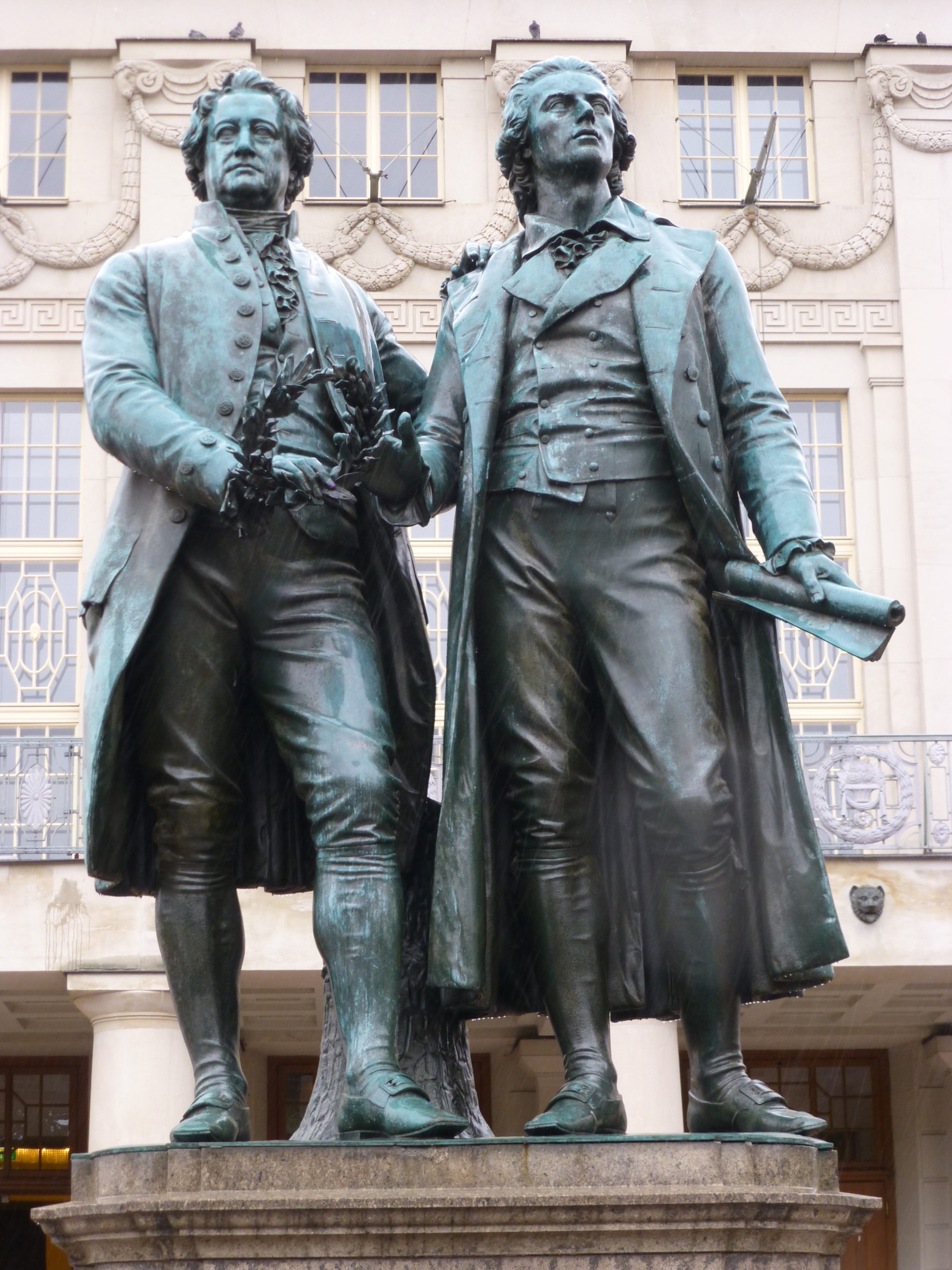The Goethe-Schiller-Denkmal at Theaterplatz is the most famous memorial in Weimar. It was made by Ernst Rietschel between 1852 and 1857 and is dedicated to Johann Wolfgang von Goethe (1749-1832) and Johann Christoph Friedrich von Schiller (1759-1805), the most important poets of German classical literature.
It may not be apparent at first glance what connects the witty derisive verses of the Xenions and poets’ monument. Unlike any other text, the Xenions symbolise Goethe and Schiller’s productive friendship as they were created in poetic collaboration beginning in 1796: “We created many distichs together, sometimes I had the idea and Schiller made the verses, sometimes it was the other way round, and sometimes Schiller made one verse and I made the other.” (Goethe to Eckermann, 16 December 1828).
Goethe and Schiller memorial. Photo: Bert van der Waal van Dijk.
The literary model was the ancient collection of texts by the Roman poet Martial, called Xenia. In this case, the Xenions were epigrams written to accompany a present for a host. Goethe and Schiller used them in a sarcastic sense and “presented” their mocking verses, which usually were not pleasing to the recipient or the contemporary literary market – a sweeping blow against writers and critics. As many as 39 pairs of verses were directed at the popular Berlin writer of the late Enlightenment Christoph Friedrich Nicolai, who had written a parody on Goethe’s Werther under the title The Joys of Young Werther in 1775. Furthermore, the Xenions can be understood as a reaction to the reserved, even deprecating reviews of Schiller’s journal project Die Horen.
In addition to their collaboration on the Xenions, Schiller and Goethe worked quite productively together on the whole. During the so-called “Ballad Year” of 1797, they inspired each other to write ballad poems. Schiller’s Wallenstein and William Tell would have been just as unthinkable without Goethe as Goethe’s continuationof his work on Faust without Schiller.
The friendship between the two poets is visually represented by the monument at Theaterplatz. The sculptor Christian Daniel Rauch produced the rst design draft, but passed the commission on to his student, Ernst Rietschel. The double portrait was unveiled on 4 September 1857 in honour of Carl August’s 100th birthday. The attempt to portray the poets as equals, right down to their equal height, is remarkable. In reality, Goethe was quite a bit shorter than his poet friend.

